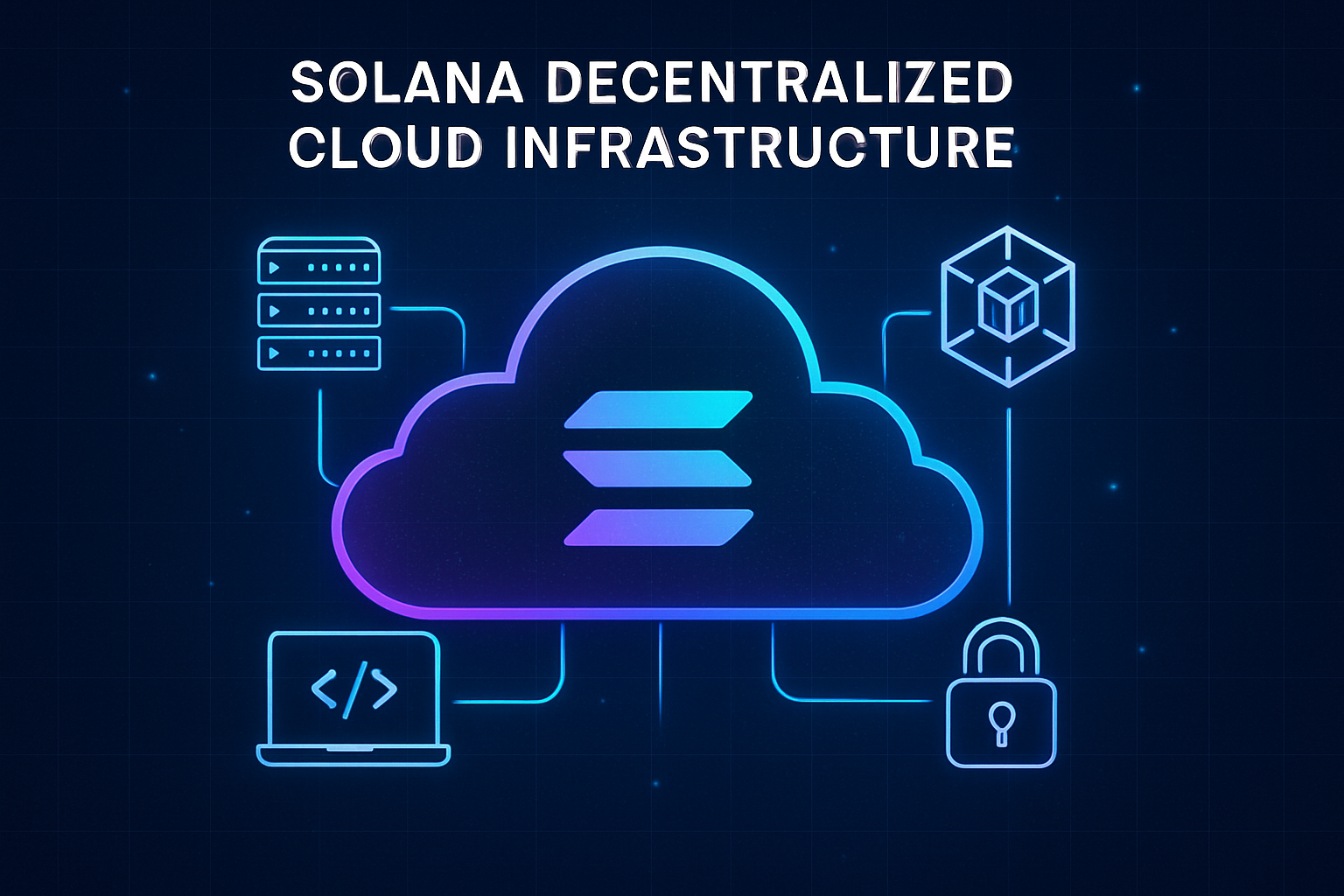
Decentralized infrastructure is no longer just a buzzword in the crypto world – it’s rapidly reshaping how we build, fund, and own real-world systems. Enter DePINFi: the fusion of Decentralized Physical Infrastructure Networks (DePIN) with decentralized finance (DeFi). This marriage is driving a new era where physical assets like data centers, charging stations, and even satellite networks are tokenized and accessible as financial products on blockchains like Solana.
What Is DePINFi? The Intersection of Physical Infrastructure and DeFi
DePINFi stands for Decentralized Physical Infrastructure Finance. At its core, it’s about connecting tangible, real-world infrastructure to digital financial rails. Instead of relying on centralized corporations or governments to build and maintain infrastructure, DePINFi leverages blockchain technology to enable communities and individuals to co-own, operate, and profit from these assets.
This is made possible by tokenizing infrastructure – think of it as turning a share in a solar farm or a piece of a decentralized cloud network into a digital asset. These tokens can be traded, used as collateral for loans, or staked for rewards. It’s democratized access to assets that were once reserved for institutional investors.
Why Solana Is the Go-To Chain for DePINFi
The migration of major DePIN projects to Solana isn’t just hype – it’s driven by real technical advantages. Solana offers high throughput, low fees, and composability that make it ideal for decentralized infrastructure at scale. Projects like Aethir, Render Network, and Decen Space have chosen Solana to power their networks because they need fast settlement times without sacrificing decentralization.
This shift is attracting both builders and investors seeking exposure to real world asset tokenization on Solana. As DePIN charging stations, cloud compute nodes, and even ground-based satellite infrastructure become tokenized on-chain, users can participate in everything from governance to revenue sharing – all secured by Solana’s robust architecture.
Recent Innovations: Credit Cards and Mutualized Asset Ownership
The past year has seen explosive growth in practical DePINFi use cases:
- Aethir x Credible Finance: Aethir’s decentralized GPU cloud joined forces with Credible Finance to launch a credit card powered by DePIN. ATH token holders can now access stablecoin loans based on their on-chain activity – no need to sell their tokens! This is all powered by AI-driven credit scoring that looks beyond traditional finance metrics.
- Mutualized DePIN Framework: This model takes things further by allowing groups to collectively own physical assets via tokenization. Digital twins provide real-time valuation while smart contracts automate liquidity and governance through asset trusts. It unlocks previously illiquid assets – imagine your community co-owning local EV charging stations as public-good utilities!
- Depinify’s Cloud Native Oracle System: Security is paramount in decentralized infra. Depinify integrates zero-trust security using both on-chain and off-chain oracles to protect digital identities across cloud-native apps.
The Current Market Landscape: Prices and Trends
If you’re tracking the pulse of the sector in September 2025, here’s where things stand:
- Filecoin (FIL): $2.49
- Helium (HNT): $2.56
- Akash Network (AKT): $1.13
This price action reflects not just short-term market sentiment but also growing confidence in community owned infrastructure models that generate real-world value beyond speculation.
DePIN Crypto Price Predictions (2026–2031): Filecoin (FIL), Helium (HNT), Akash Network (AKT)
Professional forecast based on DePIN adoption, market cycles, and current 2025 trends.
| Year | Asset | Minimum Price | Average Price | Maximum Price | Potential YoY Change (Avg) |
|---|---|---|---|---|---|
| 2026 | Filecoin (FIL) | $2.10 | $2.80 | $3.60 | +12% |
| 2026 | Helium (HNT) | $2.00 | $2.85 | $3.70 | +11% |
| 2026 | Akash Network (AKT) | $0.95 | $1.25 | $1.70 | +10% |
| 2027 | Filecoin (FIL) | $2.30 | $3.20 | $4.30 | +14% |
| 2027 | Helium (HNT) | $2.20 | $3.30 | $4.40 | +16% |
| 2027 | Akash Network (AKT) | $1.10 | $1.45 | $2.00 | +16% |
| 2028 | Filecoin (FIL) | $2.50 | $3.65 | $5.20 | +14% |
| 2028 | Helium (HNT) | $2.40 | $3.77 | $5.35 | +14% |
| 2028 | Akash Network (AKT) | $1.25 | $1.70 | $2.40 | +17% |
| 2029 | Filecoin (FIL) | $2.80 | $4.10 | $6.10 | +12% |
| 2029 | Helium (HNT) | $2.70 | $4.25 | $6.30 | +13% |
| 2029 | Akash Network (AKT) | $1.45 | $2.00 | $3.00 | +18% |
| 2030 | Filecoin (FIL) | $3.10 | $4.65 | $7.20 | +13% |
| 2030 | Helium (HNT) | $3.00 | $4.80 | $7.50 | +13% |
| 2030 | Akash Network (AKT) | $1.70 | $2.40 | $3.60 | +20% |
| 2031 | Filecoin (FIL) | $3.40 | $5.20 | $8.50 | +12% |
| 2031 | Helium (HNT) | $3.30 | $5.35 | $8.80 | +11% |
| 2031 | Akash Network (AKT) | $2.00 | $2.90 | $4.30 | +21% |
Price Prediction Summary
Filecoin (FIL), Helium (HNT), and Akash Network (AKT) are poised for steady, moderate growth from 2026 to 2031, driven by rising DePIN adoption, integration with real-world finance, and ongoing technological advances. While 2025 saw price corrections, the sector’s underlying fundamentals remain strong. Investors should expect volatility, but the long-term trend is positive, especially as DePIN projects gain traction in infrastructure, storage, and connectivity.
Key Factors Affecting Filecoin Price
- Continued migration of DePIN projects to scalable blockchains like Solana, improving efficiency and adoption.
- Integration of DePIN with real-world finance (e.g., credit products, tokenized ownership) expands user base and utility.
- Increased institutional investment and capital flows into DePIN protocols.
- Potential regulatory clarity for infrastructure-based crypto projects, reducing risk premiums.
- Advancements in tokenization, digital twins, and decentralized governance models.
- Competition from new entrants and alternative infrastructure protocols could impact growth rates.
- Overall crypto market cycles: macroeconomic trends and Bitcoin price movements will influence sector-wide performance.
Disclaimer: Cryptocurrency price predictions are speculative and based on current market analysis.
Actual prices may vary significantly due to market volatility, regulatory changes, and other factors.
Always do your own research before making investment decisions.
As DePINFi matures, we’re seeing a surge in creative models for community ownership and revenue sharing. The mutualization of infrastructure, where token holders collectively own and govern assets, has moved from theory to reality. This means that everyday users can now stake, lend, or collateralize their share of a decentralized network, whether it’s GPU compute power, EV charging stations, or satellite ground stations. It’s real world asset tokenization on Solana in action.

How DePINFi Is Changing Real-World Finance
Traditional finance has always struggled with liquidity and transparency when it comes to physical infrastructure. DePINFi flips this script by making these assets liquid and programmable. For example, the Aethir x Credible Finance credit card lets node operators tap into stablecoin credit lines without selling their ATH tokens, unlocking capital while maintaining upside exposure (read more). This is a seismic shift from legacy lending models that demand centralized collateral and opaque approval processes.
The Mutualized DePIN Framework is another game changer. By using digital twins for real-time valuation and automating governance through smart contracts, this approach transforms everything from parking lots to solar farms into investable, co-owned networks. It’s not just about financial returns, it’s about building resilient, transparent public goods that serve communities rather than just shareholders.
Top Solana DePIN Projects to Watch
-

Render Network: A trailblazer in decentralized GPU computing, Render Network leverages Solana to create a global marketplace for rendering power. Artists and developers can tap into distributed GPU resources, making high-performance computing more accessible and affordable.
-

Decen Space: Shooting for the stars, Decen Space is building a decentralized network of satellite ground stations on Solana. This ambitious project aims to democratize access to space data, enabling anyone to participate in the growing space economy.
-

Depinify: Depinify delivers decentralized, cloud-native infrastructure with a zero-trust security model. Their protocol uses both on-chain and off-chain oracles to secure digital identities and empower resilient, autonomous cloud applications on Solana.
Risks and Rewards: What to Watch
No revolution comes without challenges. Regulatory uncertainty around real world asset tokenization remains a hurdle in many jurisdictions. Security is another major concern, while protocols like Depinify are leading the way with zero-trust architectures and oracle integrations, the sector as a whole must remain vigilant against both technical exploits and governance attacks.
Still, the rewards are substantial. Community owned infrastructure models not only democratize access but also align incentives for maintenance and growth. As more capital flows into DePINFi (over $150 million in Q1 2025 alone), expect to see new categories emerge, from decentralized water utilities to mesh internet networks, all powered by composable Solana rails (explore mutualized frameworks).
What’s Next for DePINFi on Solana?
The next wave will be about scale and integration: connecting even more physical assets to fast-moving crypto capital markets while ensuring robust governance and compliance tools are baked in from day one. We’ll likely see:
- Expanded use of AI-driven credit engines for instant lending decisions
- Growth in fractional ownership of everything from renewable energy grids to urban mobility networks
- Tighter integration between on-chain identity systems and off-chain asset registries
- New insurance primitives protecting against technical failure or default risk
For builders and investors alike, the message is clear: DePINFi on Solana isn’t just an experiment, it’s rapidly becoming a foundation for how we fund, manage, and profit from real-world infrastructure at global scale.








